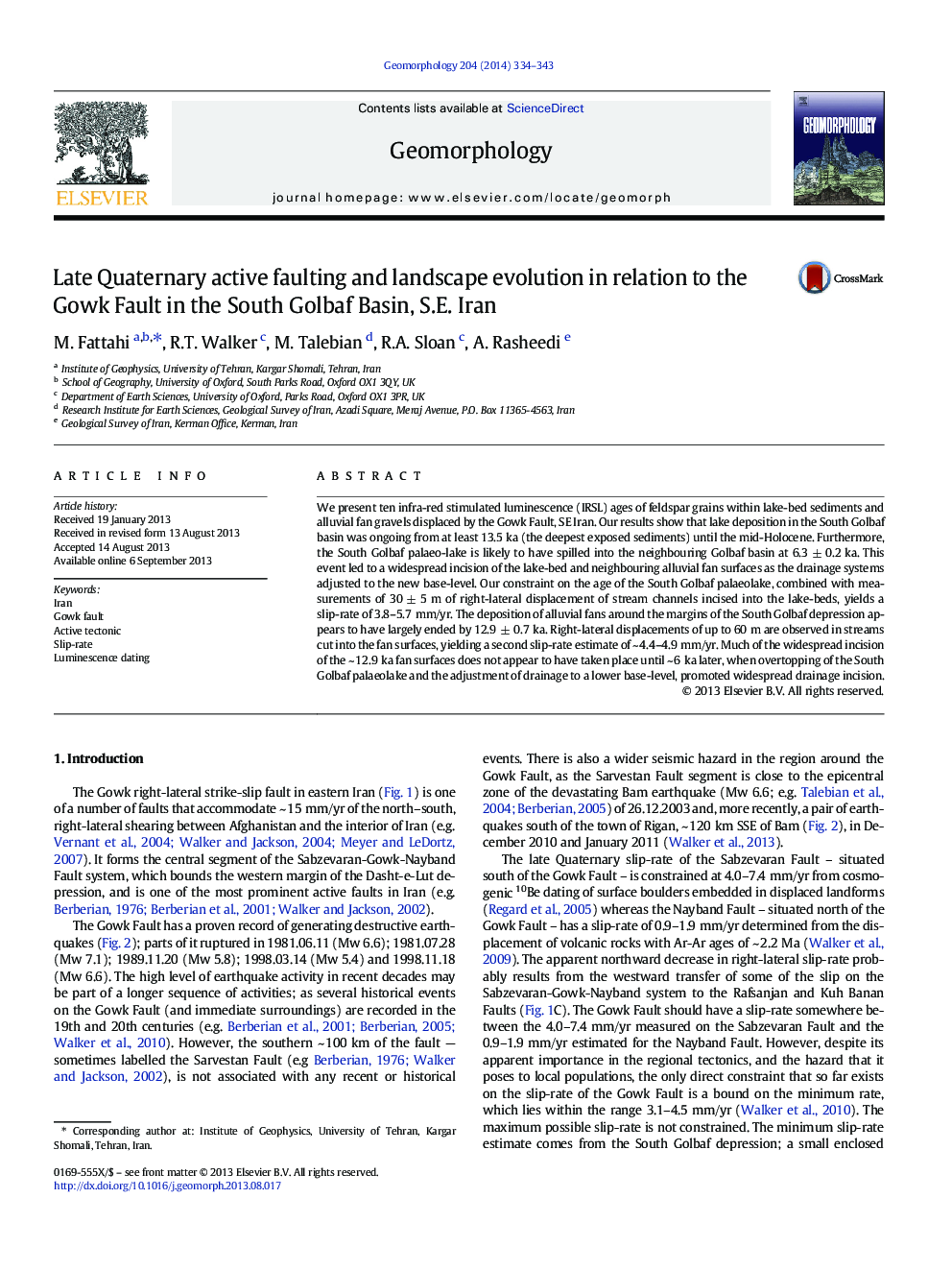| Article ID | Journal | Published Year | Pages | File Type |
|---|---|---|---|---|
| 6432745 | Geomorphology | 2014 | 10 Pages |
â¢7 IRSL ages suggest dry Golbaf lake held substantial water ~ 13.5-6.3 ka.â¢Ages and 30 ± 5 m channels displacement, yields Gowk a fault slip-rate 3.8-5.7 mm/yr.â¢Alluvial dates (20-13 ka) show fan abandonment is 6 ka older than lake desiccation.â¢60 m streams displacements in fan surfaces yield a second slip-rate of ~ 4.4-4.9 mm/yr.â¢Lake desiccation at 6.3 ± 0.2 ka is not the end-point of a climatic aridification.
We present ten infra-red stimulated luminescence (IRSL) ages of feldspar grains within lake-bed sediments and alluvial fan gravels displaced by the Gowk Fault, SE Iran. Our results show that lake deposition in the South Golbaf basin was ongoing from at least 13.5 ka (the deepest exposed sediments) until the mid-Holocene. Furthermore, the South Golbaf palaeo-lake is likely to have spilled into the neighbouring Golbaf basin at 6.3 ± 0.2 ka. This event led to a widespread incision of the lake-bed and neighbouring alluvial fan surfaces as the drainage systems adjusted to the new base-level. Our constraint on the age of the South Golbaf palaeolake, combined with measurements of 30 ± 5 m of right-lateral displacement of stream channels incised into the lake-beds, yields a slip-rate of 3.8-5.7 mm/yr. The deposition of alluvial fans around the margins of the South Golbaf depression appears to have largely ended by 12.9 ± 0.7 ka. Right-lateral displacements of up to 60 m are observed in streams cut into the fan surfaces, yielding a second slip-rate estimate of ~ 4.4-4.9 mm/yr. Much of the widespread incision of the ~ 12.9 ka fan surfaces does not appear to have taken place until ~ 6 ka later, when overtopping of the South Golbaf palaeolake and the adjustment of drainage to a lower base-level, promoted widespread drainage incision.
